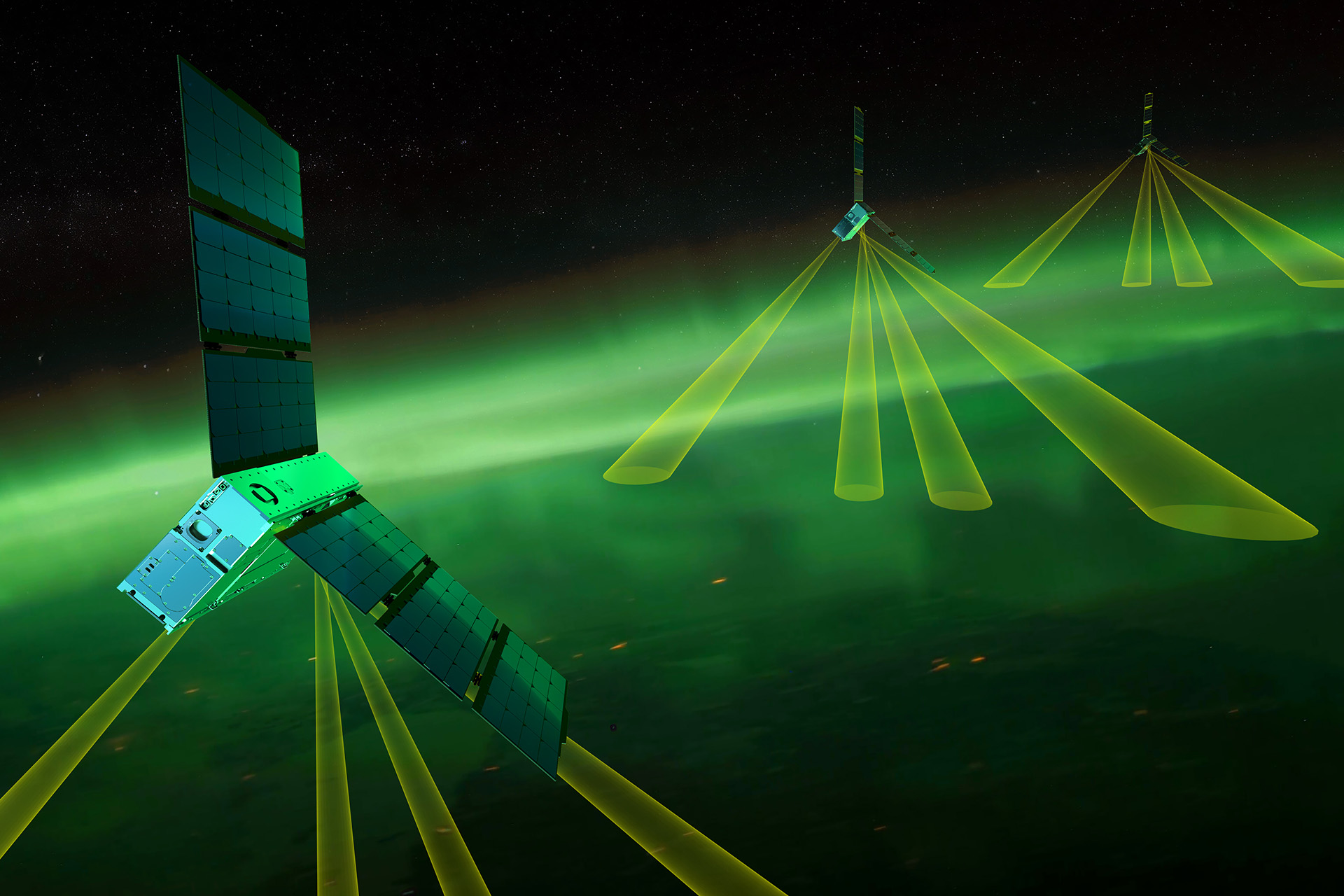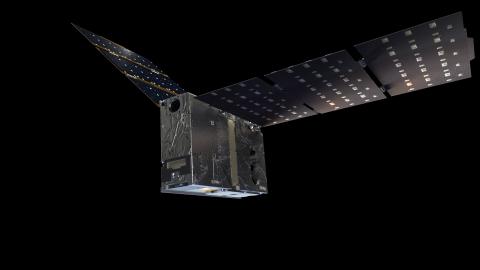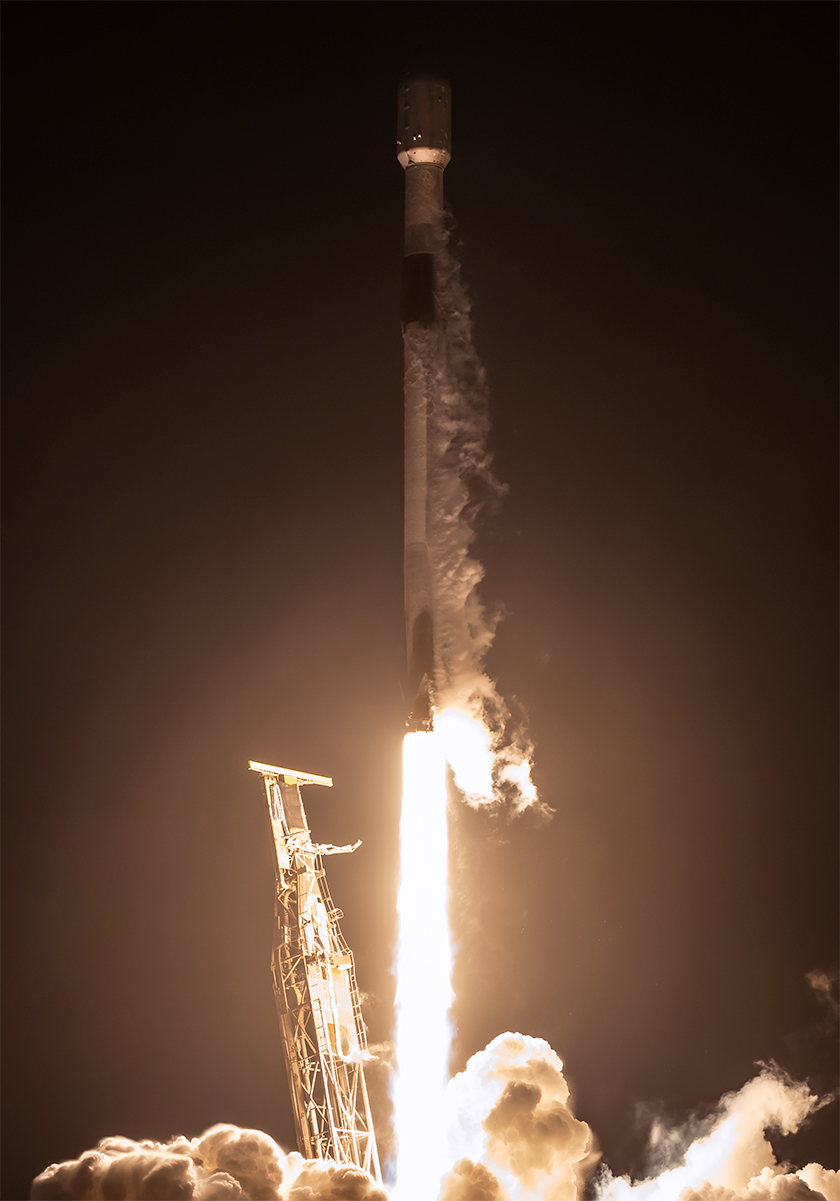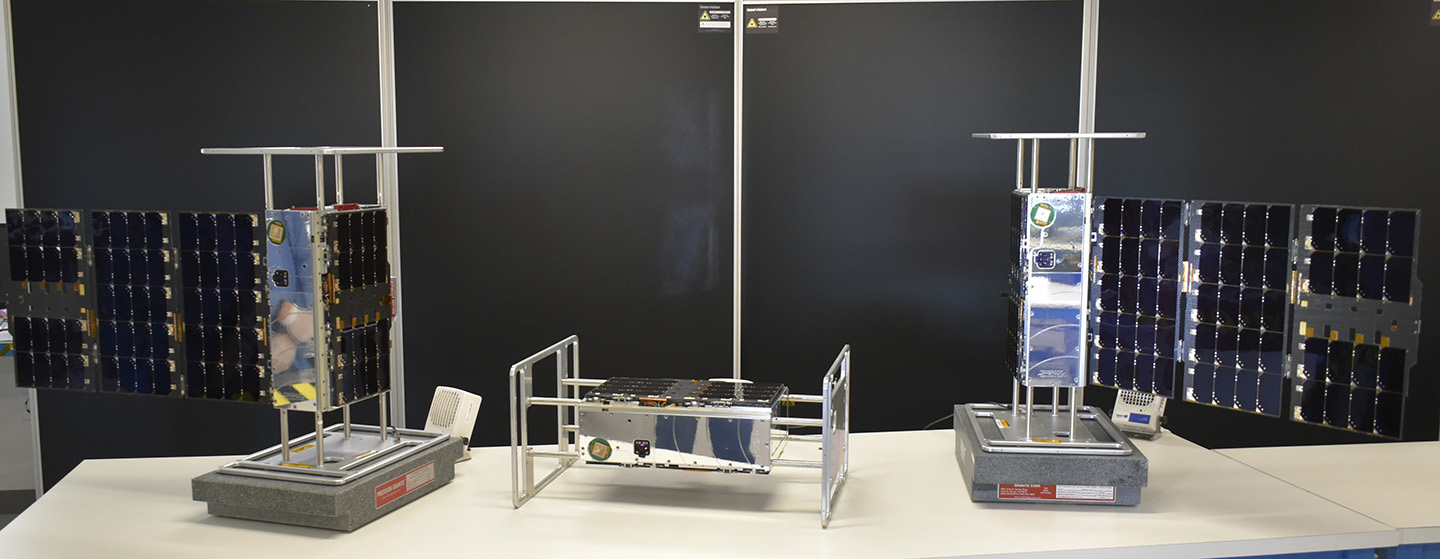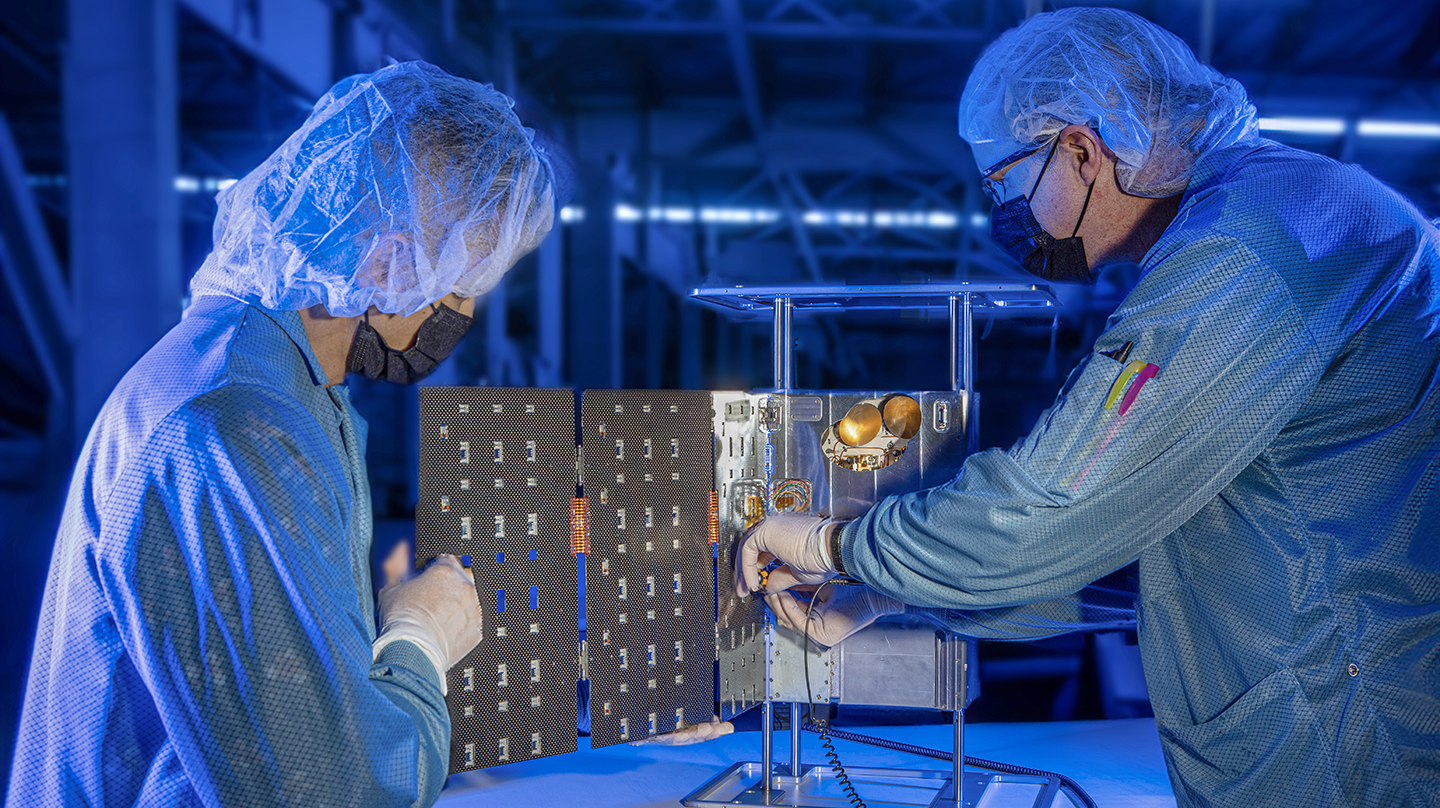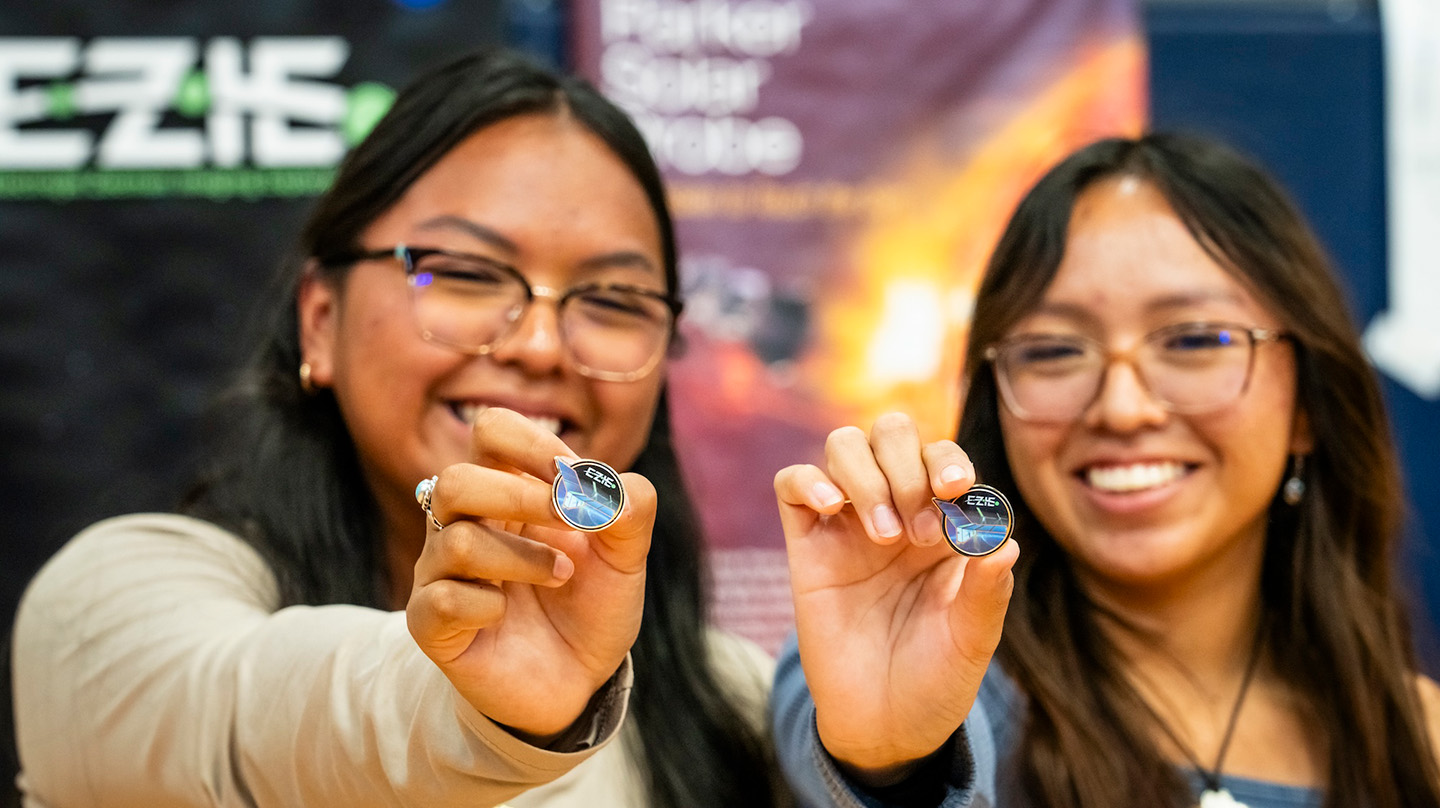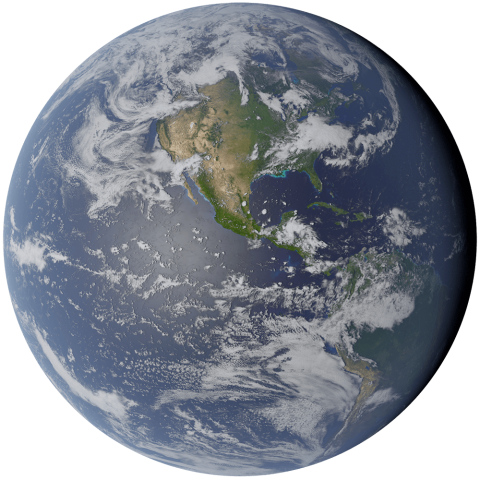The Mission
Earth’s intense electric currents called electrojets are located around 60-90 miles above the planet’s poles and Sun-facing equator and extend into Earth’s magnetosphere. At the poles, these currents form as Earth’s magnetosphere recoils after being dragged behind the planet by the Sun’s solar wind. The process explosively releases energy into the ionosphere — the high-altitude part of the atmosphere where ionized gas allows electrical currents to flow — and generates the dancing auroras. As such, these intense electric currents are central to the complex space weather system that is increasingly affecting our technological society.
Selected in December 2020 to be one of NASA’s next space physics missions, the Electrojet Zeeman Imaging Explorer (EZIE) mission will uncover new and unprecedented details about the electrojets over its 18-month duration, testing the last 50 years’ worth of various — and conflicting — hypotheses of how the electrojets form and evolve.
Using a trio of small satellites spaced 2-10 minutes apart at some 260-390 miles above Earth’s surface, the mission will characterize the electrojets’ structure over time and space. It will fill gaps in our understanding of this phenomenon and provide findings that scientists can apply to other magnetized planets, whether in our solar system or elsewhere, that are also linked to the surrounding space through electrical currents.
